Inspired By Zelda: Taking Flight With Immortals Fenyx Rising
Posted on February 13 2021 by Charles Xavier

Myths come to life in Ubisoft’s new title: Immortals Fenyx Rising! Players will take control of Fenyx, a self-doubting Shield-bearer/storyteller, as they go from obscurity to the only hope for humanity and the gods as the titan, Typhon, escapes Tartaros with intents to purge the world to reshape it to his liking.
Beginning life as an idea sparked by a bug in Assassin’s Creed Odyssey that turned the crew of certain Triremes into cyclopes, Ubisoft Quebec decided they wanted to further explore the mythological side of Greece to create a new open-world IP. Rather than having a serious tone like Assassin’s Creed games, this new project would be light-hearted and comedic. The game was revealed at E3 in 2019 with the name “Gods and Monsters“, quickly falling into the shadows, then re-emerged as Immortals Fenyx Rising during last year’s Ubi-Forward presentation in September. Liking what I saw from subsequent gameplay videos, I decided I would purchase the game. Now that I’ve completed the majority of it, I have a lot to say!
Similarities to Breath of the Wild Are Only Superficial
Obviously this game looks and feels similar to Breath of the Wild, which is a comparison the developers haven’t shied away from. Typhon is a large Ganon-esque foe whose abode lies at the center of the game’s map. Occasionally, an event called Typhon’s Rage triggers, causing enemies to respawn; which is a call back to the Blood Moon. There are 4 varied geographic regions that have a god that must be saved, and doing so rewards Fenyx with blessings that aid with gameplay; these blessings basically fill the role of the Champion’s abilities. Typhon also commands 4 corrupted demi-gods that each have a lair in the respective biome they reside in. Scattered around the world are Vaults of Tartaros, which contain both physics-based puzzles, and combat challenges; so they’re like Shrines. To cap these similarities off, almost every surface can be climbed; additionally, Fenyx obtains a pair of wings that act as a glider, and the length of time these actions can be performed are dictated by a Stamina Bar.

All that considered, rest assured, this game isn’t merely a watered down rip off of Breath of the Wild. There is a lot about Immortals that makes it unique in its own way. Take Typhon’s Rage, for example, while it has a similar function to the Blood Moon, it’s execution works much better. The Blood Moon looks menacing, but it doesn’t pose any real threat during the game. Typhon’s Rage causes normally passive enemies that can otherwise be avoided to become aggressive and unavoidable. This is great for establishing Typhon as a threat because his rage is much more than a swiftly passing red light spectacle – it’s a real deterrent that has to be dealt with in some way; whether it’s fleeing until his rage quells, or defeating the shadow of the demi-god wraith that stalks Fenyx, bringing about a temporary reprieve.
This isn’t the only aspect where the game improves upon its inspiration. I remember being disappointed with the Stable system; mainly that horses couldn’t be changed on the fly. Right off the bat Immortals gets this right: players can tame and keep every variety of creature, they can be swapped in the inventory screen, and summoned anywhere with a simple button press. And oh my Zeus, there is underwater swimming, which was something Breath of the Wild was noticably missing. It’s not required very often, but the mere fact that it’s possible in this game is pretty darn cool!
Combat is much different between the two titles as well. Immortals differentiates itself because it has no item durability, thus, the benefits of a particular weapon are always available without the risk of losing it. Players can spend adamantium shards to strengthen their weapon sets too; doing so can increase their damage output, as well as adding buffs. Speaking of buffs, in Breath of the Wild temporary potion buffs would cancel each other out, thankfully in Immortals buffs via potions can be used at the same time!
Less is More
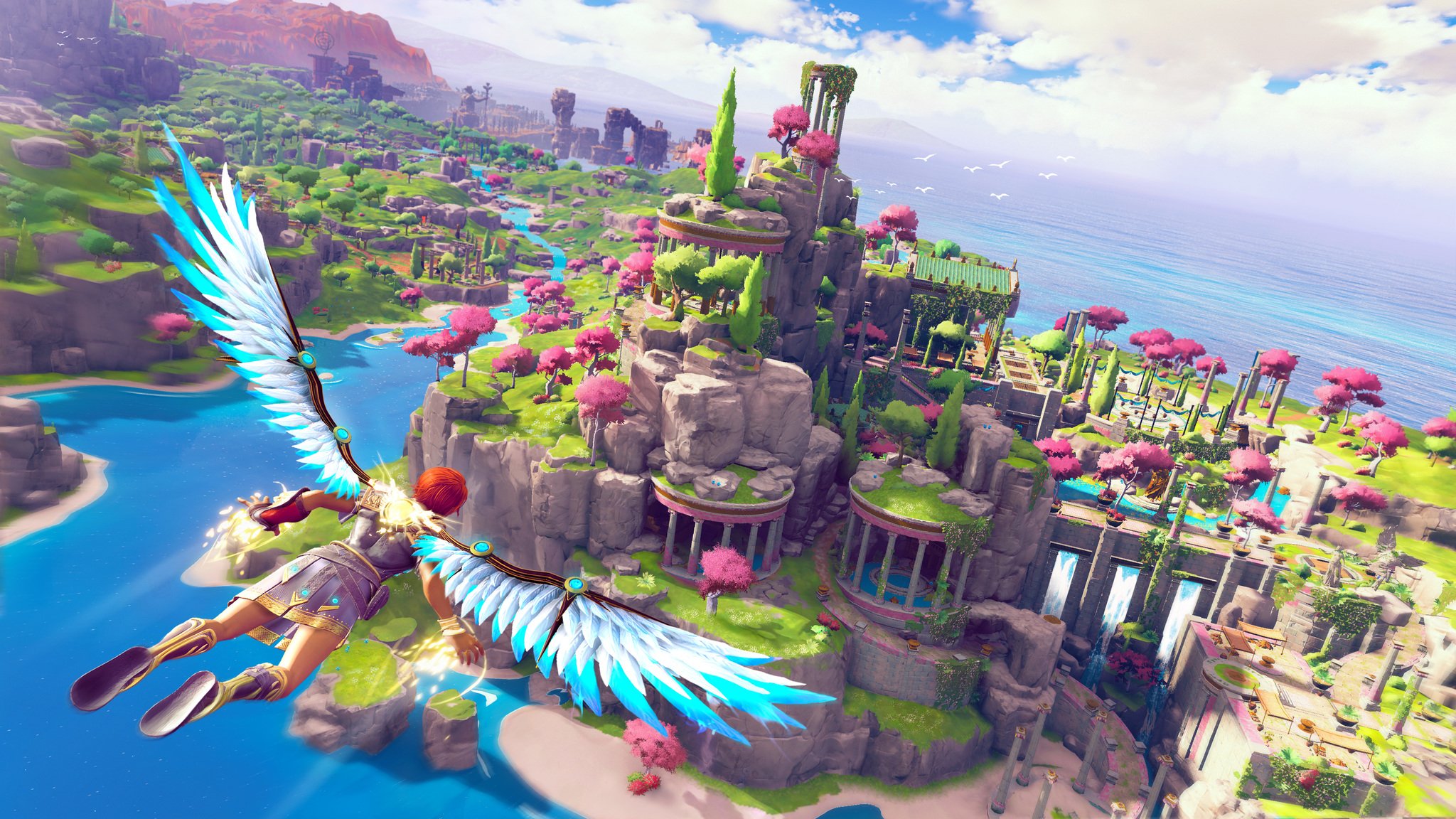
Essentially, this game draws from Breath of the Wild and refines some aspects of it, while also adding in the best from Assassin’s Creed Odyssey. Take the world itself, for instance; rather than having horizons that sprawl on and on for hours, the entire span of the world can be viewed from the Hall of the Gods, which serves as a sort of hub area. This works, for the most part, to the game’s advantage: each region is unique visually, and the attention to detail with the world design makes exploration a pleasure. This is enhanced by the art style, which looks as if beautiful landscape paintings came to life, and I found it really appealing, even on the Switch – though I would recommend purchasing the game on any other console for the full benefit of the graphics, because in some areas the framerate drops dramatically on the Switch version.
The game also gives the liberty to explore the world like a standard Assassin’s Creed game, or to recapture the thrill of Breath of the Wild. Scouting the world in first-person view via a feature called Far Sight will give an option to reveal points of interests that lie ahead, a player can choose to do this often to have multiple map markers to follow in an Assassin’s Creed style of play, or this feature can be un-utilized to make exploration a complete surprise.
There are always tasks to do out in the world: like finding a Myth Challenge, fighting monsters, collecting potion ingredients, or stumbling upon a Vault of Tartaros. They give a decent amount of variety, but the lack of towns or areas where NPC’s gather is a downside. This is where having less works to the game’s detriment. It feels like it could have benefitted from interaction with NPC’s besides the main cast of gods that Fenyx is helping. Some of the tasks that Hermes offers would have worked better as side-quests related to other NPC’s. I’d go as far to say that even with the world being visually pleasing, because there are no NPC’s to interact with, the world feels less engaging than it could be. Granted, narratively there is a reason why there aren’t bustling towns, so I can’t be too harsh on the lack thereof.
Puzzles for the Psyche
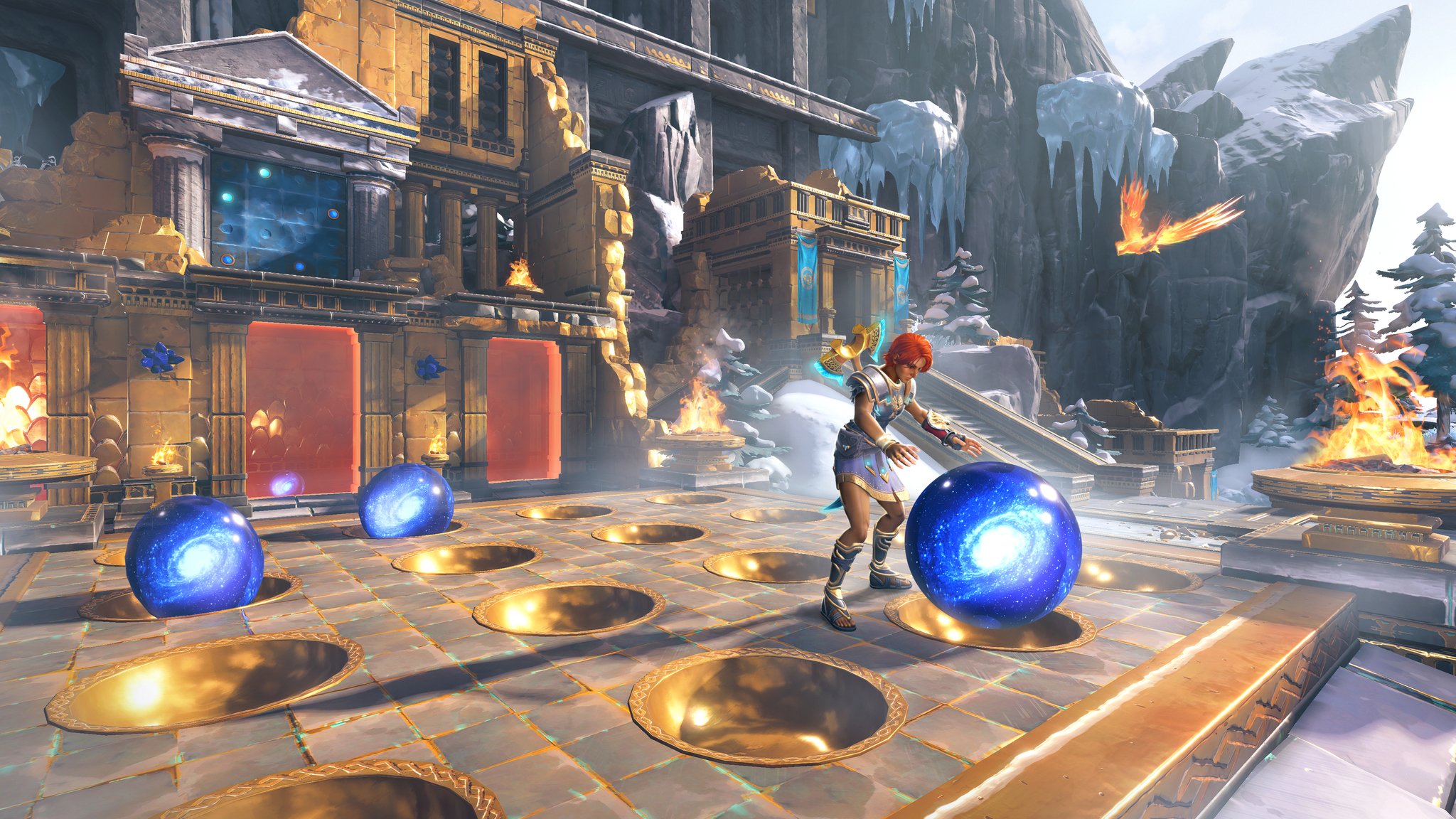
In a change of pace from most Ubisoft games, Immortals has a heavy emphasis on puzzles, both throughout the overworld and in Vaults. There is decent variety overall, even with a lot of the same mechanics being re-used, because they are incorporated in interesting ways. The basics of most puzzles come down to pushing/grabbing blocks, rolling balls, and shooting arrows at or through various targets, all to achieve different goals. Upgrades to Fenyx’s Godly Powers will make these tasks easier, like allowing the player to lift large boxes to move them, or letting them speed up or slow down a guided arrow for precision control. There are also Myth Challenges out in the overworld that focus on navigation, gathering pearls to replicate constellations, memorizing the strings played on small lyres that must then be played on a larger lyre found elsewhere, and solving simple slide puzzles that feature Fresco paintings. These overworld puzzles are never too hard, but some require more effort to complete than others.
Puzzles in Vaults, on the other hand, consistently have different degrees of complexity. The only nit-pick I have is that the majority of the vaults feature only one puzzle mechanic. For example, if a Vault’s theme is moving boxes to put on top of pressure plates, that is the only goal of puzzles throughout the entire Vault. Even the God Vaults, which are the most lengthy Vaults in the game, fall victim to this. The only exception is Typhon’s Vault at the end of the game, and it was probably my favorite Vault because of that.
That’s not to say the puzzles in the game aren’t challenging or fun for what they are, there are quite a few puzzles that really made me think, and some that I did enjoy a lot. It certainly hearkened back to classic linear puzzle solving from Zelda, and I was satisfied with their execution of it as a whole.
A Frustrating Combat Dilemma
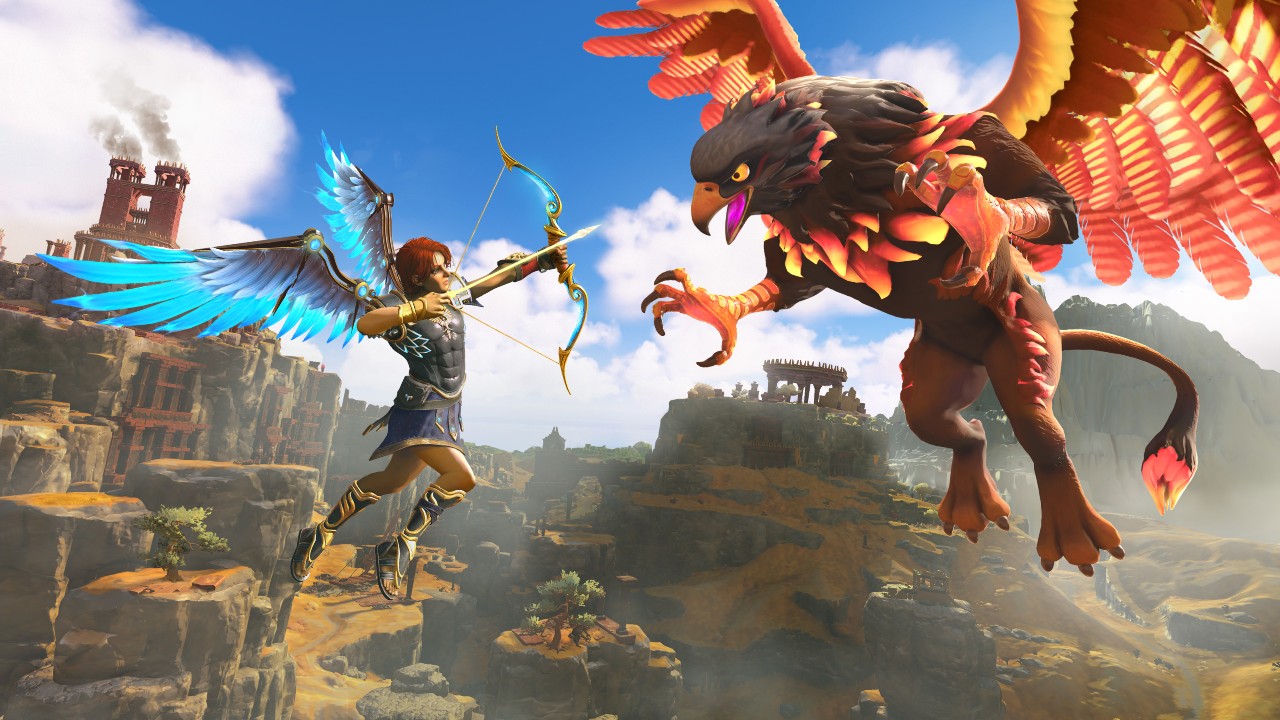
The game’s combat is a mixed bag, and it takes awhile before the initial tedium of it wears off. When the game begins, it’s a struggle just to stay alive, but by upgrading potions, armor, and your weapon stats, as well as gaining more health and stamina, gradually a player can begin exploring with confidence. As they scale their stats up some enemies will scale up alongside them; the result is most of the game is no walk in the park. Case in point, I’ve come across Vaults guarded by enemies while being fully stocked with potions, with full health and my Axe and Sword stats really high – the odds are overwhelmingly in my favor, I’d say – yet while in the catharsis of spamming attacks I get careless of my health, I forget to dodge and parry, and the next thing I know, I’m dead.
How a player chooses to unlock skill trees will determine how well they do in certain aspects of the game’s combat; although the game doesn’t make this very clear. Some skills are catered to the typical enemy encounters out in the overworld, while others are slightly tailored to give an edge against bosses. At first I chose to focus on normal skills, so when I encountered my first boss fight I got mopped. This altered my approach to the skill tree for awhile, I began pouring my upgrades into the Godly Powers that would dish out huge damage to bosses. It helped, but I was still finding myself only barely beating them. To excel at the game I was faced with a circular dilemma.
I needed to continue boosting my stats and abilities, gain more health, as well as upgrade Stamina so that combat could be easier. This requires exploration of the world, and completing Vaults. As previously mentioned, Typhon’s Rage hinders exploration and can only be temporarily stopped by defeating a wraith of a demi-god that is about as strong as a mini-boss. And while fighting that wraith, I’d die, bringing everything full circle. To easily beat him I need to be exploring, but the act of exploring causes me to encounter him. I can only eliminate this wraith for good by going to its Lair and fighting the wraith’s actual form, but I can’t do that with a decent shot to win unless I explore! The first 15 hours of gameplay consisted of this agony, and I got fed up with it. I evaluated my options, and decided the best approach was to head into the Demi-God’s lair with as many potions as I could carry, stack the potion buffs, and go ham on the boss so I didn’t have to deal with Typhon’s Rage in that particular region anymore.
Therein lies the issue: the game makes a perception that you can try to prioritize certain combat tactics and still have a decent experience, but this isn’t true. Often the only options are to retreat and try putting resources into other skills that might help with bosses, which leads back into the circular dilemma, or use potions to force victory against the boss. Most skills do help with battles out in the overworld, but only a select few will do anything noteworthy in boss battles, making the open-ended customization fall apart really fast. As a consequence, every boss battle boils down to the same thing: does Fenyx have enough potions?
It’s odd because the way the skill tree advances combat against most enemies can make huge differences. I used to dread fighting any monsters that could fly, but once I got the ability to launch Fenyx towards them they became slightly easier. The big game changer was being able to pull them towards Fenyx, which worked better for my playstyle, as I disliked aerial combat. However, if I came across a flying boss, for the length of the battle the majority of my skills become pointless, and the ones designed to help against aerial foes don’t work where they matter most, and it turns out putting stats into the bow would have been a better option. This discrepancy is really frustrating because the majority of the time combat is fun, so it’s a shame that there are areas where it really devolves. This isn’t to say combat is broken, boss battles are an outlier, and there are ways to make them easier, the problem is the methods used to win aren’t always the ones a player may have hoped to work.
Disney’s Hercules, the Video Game
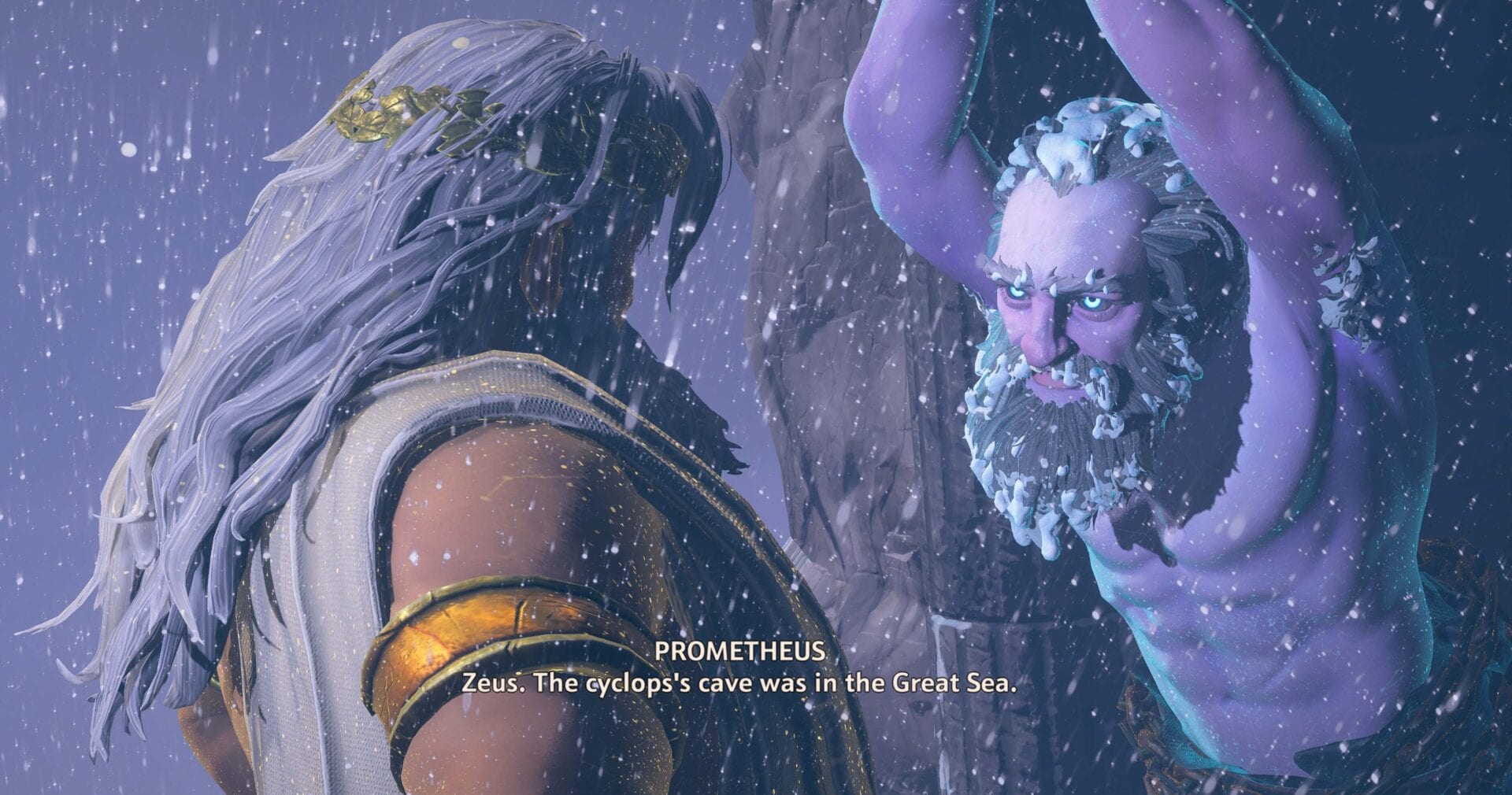
Like most Greek myths about the gods, Immortals is simply another chapter of the dramas between them as a family, and overall family drama is what drives the majority of the plot, not just in the case of the gods, but for Fenyx as well.
Even with the more serious underlying message, the presentation is foremost that of a comedy. I’ve seen people compare the game’s plot to that of a Disney film, and honestly that’s almost a spot on comparison. The story is told by the Titan Prometheus to Zeus, and throughout the game they will have back and forth banter as the story is told. Prometheus is usually the more serious one, while Zeus delivers the punchlines. The jokes can be a bit hit or miss, but the game cracks them so unapologetically that they are expected, and never get annoying; plus the duo are usually pretty endearing. This is Fenyx’s story though. At the beginning of the game players can choose Fenyx’s gender and customize their appearance, so it’s entirely up to a player to decide how they think Fenyx should look. As a protagonist they are characterized very well, they have a lot of spunk, good times, as well as bad ones, plus their struggle in life fits perfectly with the game’s focus on family drama.
Fenyx has spent their entire life living in the shadow of their older brother, Ligyron, always wishing to be a great warrior like him. After their ship is struck by a storm, washing them ashore on the Golden Isles, and everyone except Fenyx is turned to stone by Typhon, our hero finally has a chance to do great deeds. The goal is to restore each of the 4 gods that Typhon stole essences from, and with their aid, face him in battle. Each god has their own problem due to being separated from their essence, and Fenyx has to boost their egos to get them to cooperate despite their lesser forms.
The story is ever present, typically no matter what is happening it’s progressing in some way, so it never feels like there are gaps where nothing is happening. Even side-quests usually involve recaps of Greek myths, and as they are recounted Prometheus and Zeus add insights which do great to flesh them out as characters. Most of the myths I knew, but admittedly there were times I found myself learning about one I’d never heard before. The recounts of the myths don’t go into depth, but the jist of them can be picked up by people even if they are unfamilar with the myth in question, of course without the full context and finer details. At the very least, they might inspire people to dig deeper into the myths, which is awesome.
While it’s not the greatest story ever told in a game, it’s a modest attempt that was mostly enjoyable. Almost every character has a nice growth arc, particularly Fenyx and Zeus. It’s certainly a testament that not every game needs to have a completely serious story throughout, as long as there is good writing, and the story that is told is fun, it can be engaging.
Conclusion
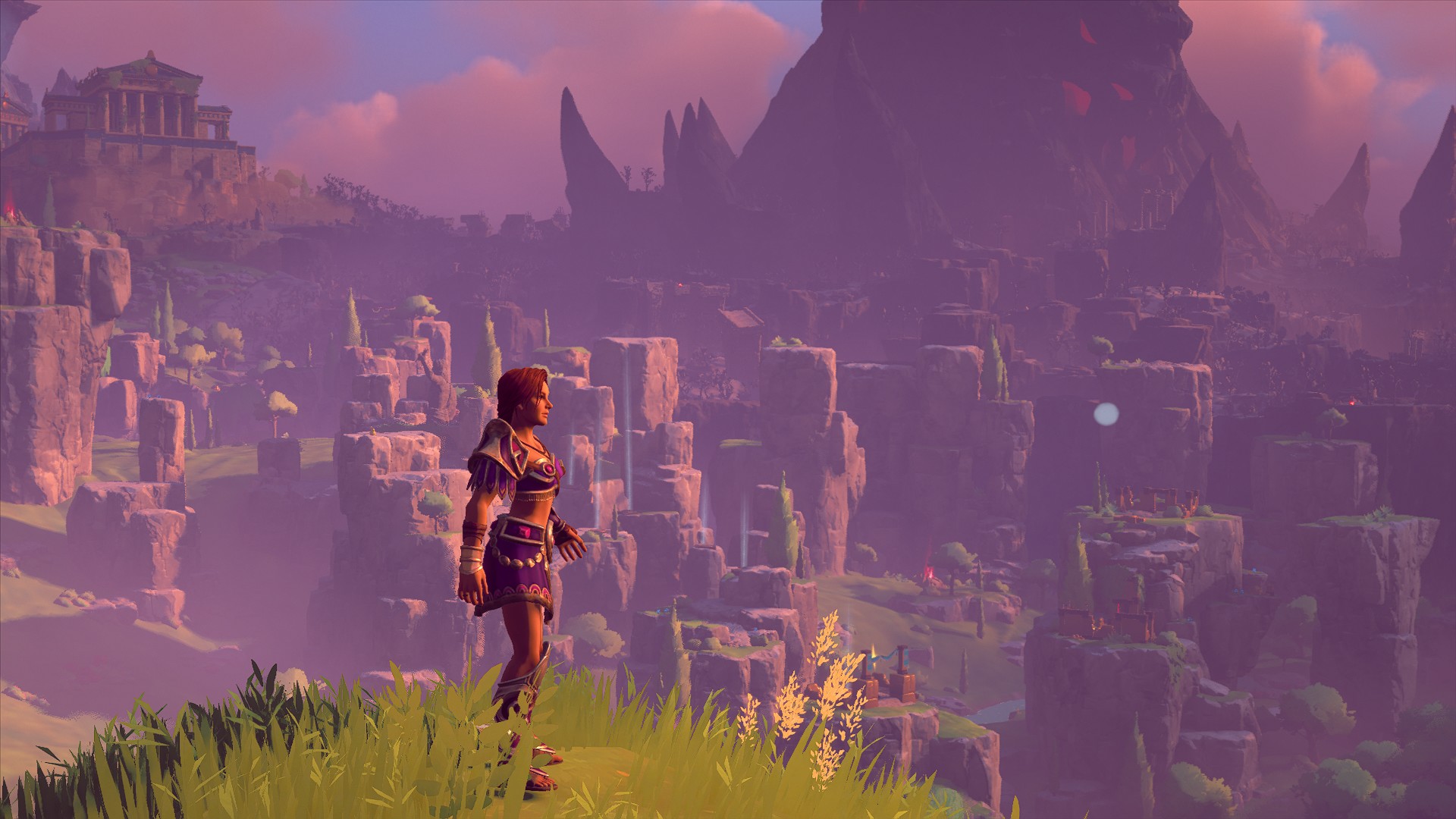
To wrap things up, Immortals Fenyx Rising is a game that could be better than it is. By far its strongest points are the plot, the vibrant world, and its puzzles. It’s combat mechanics show a lot of promise, but because the best aspects of it are undermined periodically, it’s the sole major disappointment of the game. There are 2 unreleased DLC expansions to the game, honestly, I feel like if they address the issues with the combat, and add more NPC’s, that would take a decent experience to that next notch which the base game never quite reaches.
It’s not Breath of the Wild 2, but trust me that if you are looking for a Zelda-like experience to hold you over for it, this is a solid purchase! You can currently pick up the game on PC, PlayStation 4, Xbox One, and Nintendo Switch, as well as on PlayStation 5 and Xbox Series X.
If you’re enjoying our reviews of Zelda-like content, we invite you to get lost once again with our upcoming classic review of Fairune!
Charles is a Senior Editor at Zelda Dungeon. He is a massive fan of Star Wars, The Lord of the Rings, and Marvel Comics. He enjoys Skittles immensely.

Charles is a Senior Editor at Zelda Dungeon. He is a Visual Development artist focused on enviroments and pitch paintings. Check out his Instagram and Twitter to see his latest artworks, a lot of which is Zelda fan art! His favorite candy is Skittles – he feels the world should know this.



